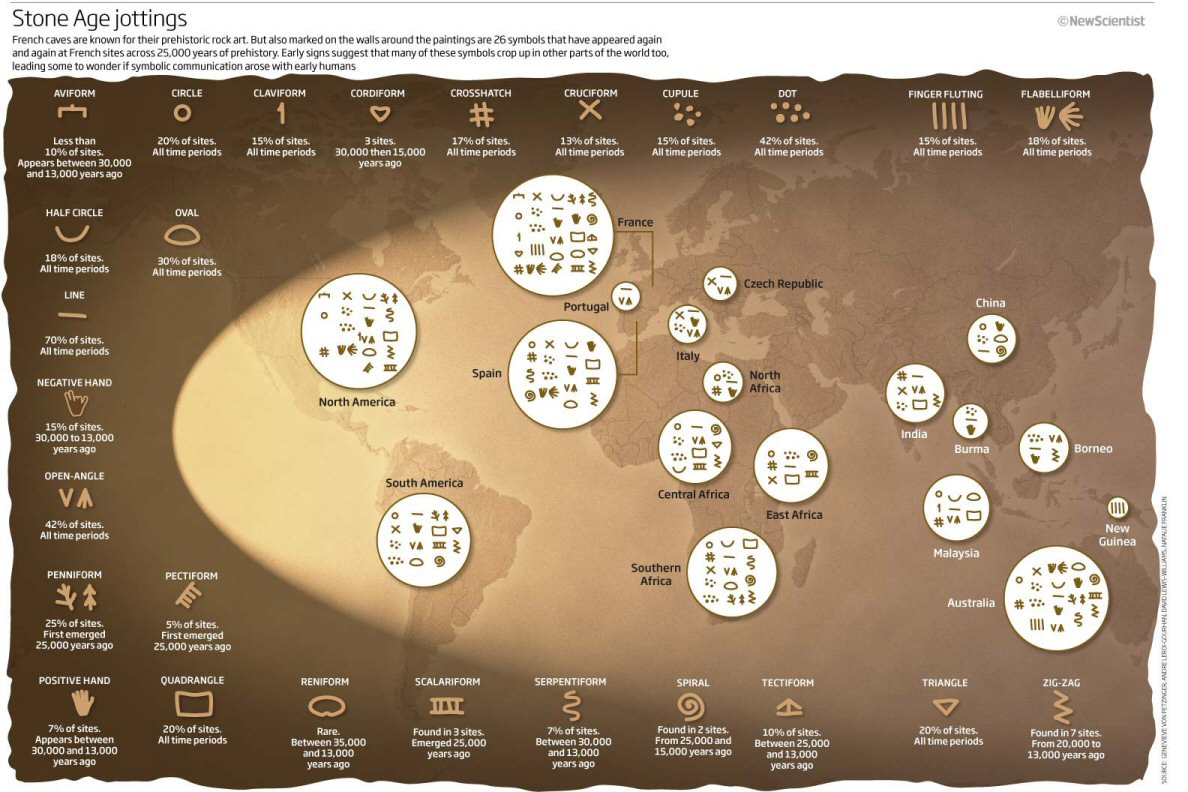Global Neolithic Cave symbols and the Collective Unconsciousness

When faced with such spectacular beauty, who could blame the visiting anthropologists for largely ignoring the modest semicircles, lines and zigzags also marked on the walls? Yet dismissing them has proved to be something of a mistake. The latest research has shown that, far from being doodles, the marks are in fact highly symbolic, forming a written "code" that was familiar to all of the prehistoric tribes around France and possibly beyond. Indeed, these unprepossessing shapes may be just as remarkable as the paintings of trotting horses and tussling rhinos, providing a snapshot into humankind's first steps towards symbolism and writing.
Until now, the accepted view has been that our ancestors underwent a "creative explosion" around 30,000 to 40,000 years ago, when they suddenly began to think abstractly and create rock art. This idea is supported by the plethora of stunning cave paintings, like those at Chauvet, which started to proliferate across Europe around this time. Writing, on the other hand, appeared to come much later, with the earliest records of a pictographic writing system dating back to just 5000 years ago.
Few researchers, though, had given any serious thought to the relatively small and inconspicuous marks around the cave paintings. The evidence of humanity's early creativity, they thought, was clearly in the elaborate drawings.
While some scholars like Clottes had recorded the presence of cave signs at individual sites, Genevieve von Petzinger, then a student at the University of Victoria in British Columbia, Canada, was surprised to find that no one had brought all these records together to compare signs from different caves. And so, under the supervision of April Nowell, also at the University of Victoria, she devised an ambitious masters project. She compiled a comprehensive database of all recorded cave signs from 146 sites in France, covering 25,000 years of prehistory from 35,000 to 10,000 years ago.
What emerged was startling: 26 signs, all drawn in the same style, appeared again and again at numerous sites. Admittedly, some of the symbols are pretty basic, like straight lines, circles and triangles, but the fact that many of the more complex designs also appeared in several places hinted to von Petzinger and Nowell that they were meaningful - perhaps even the seeds of written communication.
Much more:
http://www.sott.net/article/203166-The-writing-on-the-cave-wall
